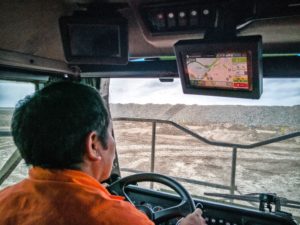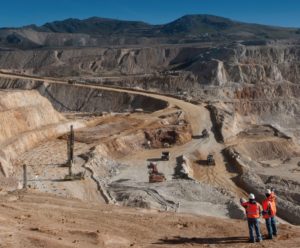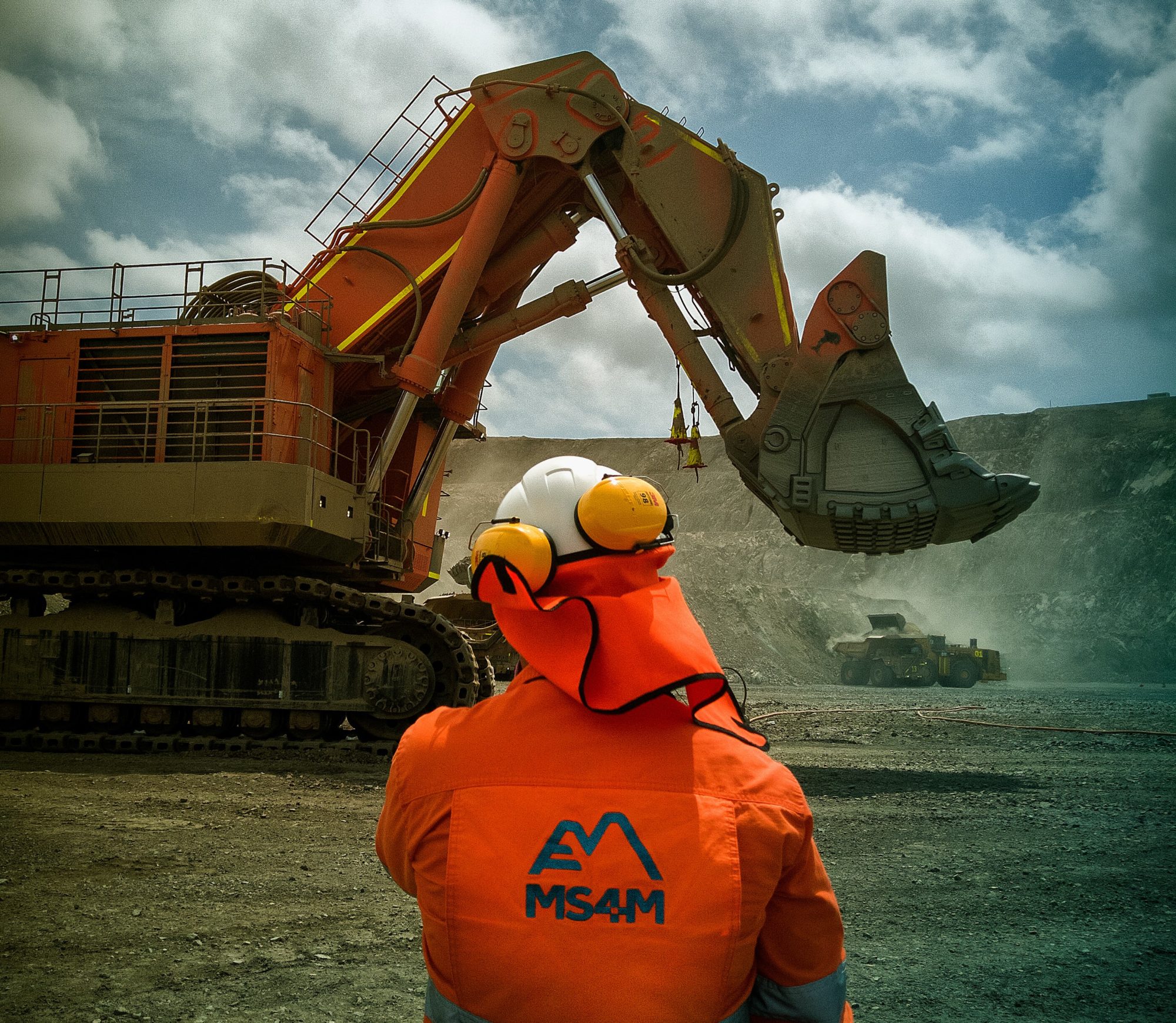IM Editorial Director, Paul Moore, spoke to Wilder Pando, CEO of MS4M, the now global provider of real-time mine management and optimisation solutions with a unique offering breadth covering a complete ecosystem of fleet management, fatigue management, proximity detection, equipment health monitoring and reporting. Its growing client base includes major operations in Latin America as well as the world class Kumtor gold mine in Kyrgyzstan while it is broadening its partnerships to bring greater flexibility for customers as automation take-up gathers pace, including the recent agreement with ASI Mining
Can you give some background on MS4M in terms of the company history, background and the unique value you bring to mining?
WP: MineSense for Miners (MS4M) was founded in 2013 by experienced mining engineers and managers determined to develop a solution that would meet and exceed current solution capabilities and support issues by filling existing gaps and taking advantage of emerging technologies. This was based on an overlying philosophy to provide an ecosystem with a suite of point solutions that would be seamlessly integrated and would carry maximum flexibility to interface with other 3rd party technology products.
The suite of solutions was designed from scratch from both software and hardware perspectives. With respect to software, the goal was to balance leading optimisation techniques such as genetic algorithms and machine learning with generally accepted SQL techniques to fetch and manage data. Hardware was simply developed with a view to maximising simplicity, reliability, and utility. The resultant hardware carries a small footprint, is easy to support, and has proven to be extremely reliable. This has also allowed us to be very competitive from a cost perspective.
Combined, the solution addresses the broad areas of: Safety, Productivity, Equipment Health, and timely reporting (Real-time and Historical) – while raising the bar on the provision of support. Under the banner of ‘Developed by Miners for Miners’ we have succeeded in this mission as demonstrated by a rapidly growing customer base that currently stands at 11 operating mines. With this, MS4M currently employs over 150 personnel, and has a presence on five continents. Our customers appreciate that the entire suite of products has been deployed – with them in mind – by experienced mining personnel who have shared experiences in difficult operating conditions.
In the current global pandemic environment, flexibility and rapid reaction to a dynamic situation has been clearly demonstrated at an underway Argentinian installation. In this case, we have managed to keep the project on track by developing and executing online training for operators, dispatchers and other mine personnel.

Is the fact you have grown first in the regions where mines are actually located eg in South America been a factor in your growth as well as the fact you are not linked to any equipment suppliers or dealers?
WP: The MS4M suite of products was developed in Peru as its diverse mining environment provided close proximity to a wide variety of operating challenges that could be solved with advanced fleet management technology. Our first client, Hudbay’s Constancia copper mine located in the Andes Mountains, was an ideal location for our first commercial deployment. The challenges of: altitude, rapid weather changes, new workforce, and a significant amount of operating equipment provided rapid validation of the solution as well as revealed new opportunities to solve different operational bottlenecks.
Building off of the reputational capital generated by this initial client mine site, MS4M was well equipped to broaden its base in the region to the extent that MS4M is now the market leader in Peru and is growing into Chile, Argentina and elsewhere in South America.
Regarding independence from equipment dealers, this has allowed us to develop solutions with the mining operations in mind and without the potential of undue influence. Furthermore, and anecdotally, the mines are more comfortable with this independence as it mitigates any notion of misplaced priority. That said, the major competitors in the FMS space, and which are tied to major equipment suppliers, do not appear to be negatively constrained working in environments with other equipment brands.
Looking at ControlSense, what does it offer versus Wenco, MineStar, Hexagon, Modular etc in terms of functionality and what it offers the customer – is it better value, more options for smaller miners and contractors instead of just the big players?
WP: Every solution has its unique strengths and we strongly believe that our suite of products cost effectively addresses current and emerging operational opportunities. The MS4M system is suitable for any size mine in both owner operator and contractor scenarios. Our largest customer is Centerra Gold’s Kumtor mine, located in the Kyrgyz Republic at 4,000 m above sea level. Kumtor currently has our system installed on about 175 equipment including 100 trucks, 15 HP-GPS shovels and numerous auxiliary equipment. The system has been operating flawlessly there for over three years and has supported the delivery of productivity improvements of ~10% over and above their previous fleet management system. This has contributed to a ~25% reduction in mining cost/tonne. On the other hand, a mining contractor in Peru has enjoyed similar benefit by being able increase production by a reported 15%.
With respect to differentiation from our competitors, ControlSense® uses a genetic algorithm which is more effective in the complex mining environment. In this rapidly changing setting, which comprises many input variables, it is positioned to make better decisions which honour: production objectives (cost or productivity), operational requirements, and plan compliance (including priorities, sequencing, digging limits, and planned mining cost).
Blending is particularly advanced with capability extended to blend recipe determination based on shipping (sales) requirements. This is extended to multiple crushers with different blends derived from multiple sources including run of mine, stockpiles and even underground operations if present. Compaction and leach pad modules have proven to carry high utility in the construction and management of structures such as dykes and leach pads.

How significant is the recent deal with ASI? Are you already working with them on any projects? How will ControlSense interface with their Mobius?
WP: ASI is a proven provider of OEM agnostic autonomous solutions in the mining and other industrial spaces on a variety of equipment platforms. As the mines are exploring and deploying autonomous equipment on a variety of scales, it has become critical this equipment be able to co-exist with fleet management systems. This agreement ensures compatibility between our platforms thus providing our clients with flexibility and optionality as they develop their paths towards automation in mixed fleet environments. MS4M will interface with Mobius via a bi-directional link exchanging geospatial information with optimisation and fleet management instructions.
Similarly, for your HealthSense offering – what does it offer that others in the same space like Honeywell Matrikon, Dingo, Modular etc do not in terms of preventative maintenance; as well as the likes of Michelin, Rimex, PressurePro etc in TPMS?
WP: Each of these solutions addresses different aspects of asset health. This includes predictive maintenance, component failure prediction and real-time alerts through OEM alarms. Where these systems become very valuable is through algorithms, such as trending, where different OEM reported values may seem insignificant on their own, however, can predict a catastrophic engine failure when combined. HealthSense was designed to not only track and sense health parameters independently (teeth, tyres, OEM events), but also to interface with a variety of 3rd party technologies thus enabling better informed near real-time reaction to equipment health related issues as they occur.
Ultimately, the goal is to reduce downtime variability in a chaotic environment. This includes mitigating catastrophic failures, performing only work that needs to be performed, and raising the visibility of troublesome trends. By combining what we have with respect to sensing with other specialised technologies, we are better positioned to meet that goal. Note in the case of catastrophic failures, this evaluation is also replicated onboard the equipment and will provide notification directly to the operator for immediate action – which is critical if equipment is in an area with weak or no communications.

With SafetySense same questions, why would someone go with that versus a Wabtec, Cat, Hexagon or other solution in terms of cost and functionality?
WP: Consistent with our development philosophy, SafetySense™ is fully integrated with the MS4M suite of products. With this, fatigue and proximity alerts flow seamlessly to a common central location. What this means is that dedicated screens for this function are not required. Furthermore, our solution uses machine learning to automatically define and store unique characteristics by operator thus enhancing mitigation of both false positives and negatives. Beyond these basic functionalities, we are deploying advanced technology that supports operation in fog and other times of challenging visibility. As with HealthSense™, and given the tacit criticality of safety in the mines, we are actively looking for other technologies for either integration with, or interface to, our modules.
Is the fact you can offer the full suite or just individual elements also proving popular?
WP: Absolutely. The ability to mix and match modules in a way that does not limit future requirements has been very popular with most of our clients following the path of incremental deployment (for reasons ranging from cost constraints to perceived need). Given that many of our brownfields customers have existing technologies that address very specific needs, our ability to rapidly develop interfaces with 3rd parties has been particularly well received. This includes, and is not limited to, bi-directional interface with a variety of mine planning systems and plant systems such as PI which provides obvious benefits.

How as a company are you adapting to greater use of automation and intelligent systems in mining – are your products all fully interoperable?
WP: We have assembled an R&D department that focusses on detecting emerging technologies in both the mining industries, and from other industries which could be crossed over. An example of this is our leach pad module which utilises machine learning to rationalise data from our compaction module with plant recovery data to optimise the leach pad loading process in real-time. As discussed earlier, our goal in this area is to provide maximum optionality and flexibility to our customers – hence the agreement with ASI. We expect that this will evolve moving forward. All of our solutions are fully integrated and interoperable – and structured to maximise their ability to seamlessly integrate with other relevant technologies where practicable.












